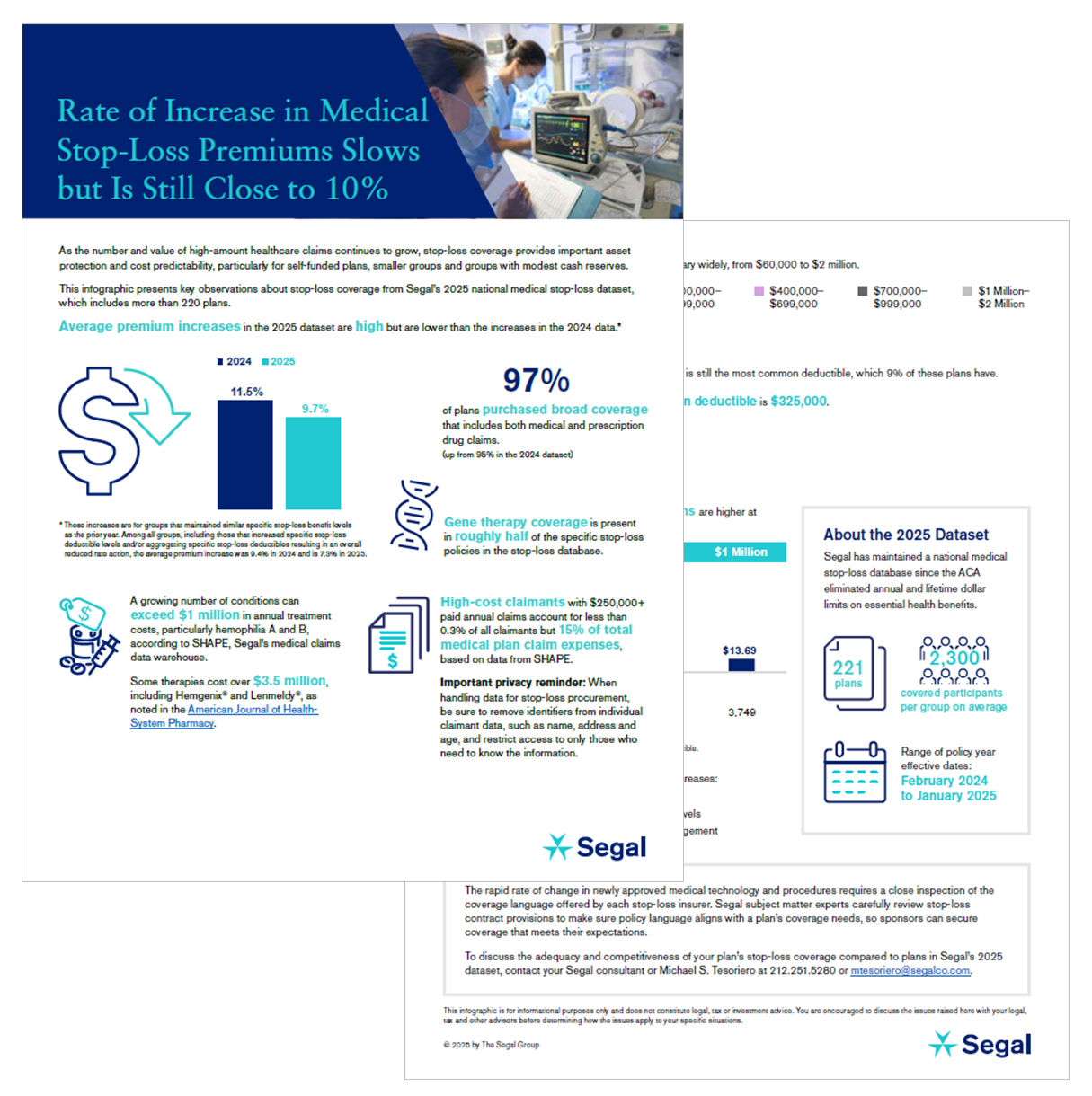

Reports and Surveys | July 25, 2025
The average stop-loss coverage premium increase is 9.7 percent for the 221 health plans in Segal’s 2025 national medical stop-loss dataset.
The average is for groups that maintained similar specific stop-loss benefit levels as the prior year.
Among all groups, including those that increased specific stop-loss deductible levels and/or aggregating specific stop-loss deductibles resulting in an overall reduced rate action, the average premium increase is 7.3 percent.
You’ll learn:

High-cost claimants with $250,000+ paid annual claims account for less than 1 percent of all covered individuals but 15 percent of total medical and prescription drug claim expenses, according to SHAPE, our medical claims data warehouse.
As the number and value of high-amount healthcare claims continues to grow, stop-loss coverage provides important asset protection and cost predictability, particularly for self-funded plans, smaller groups and those with modest cash reserves.
The fact that a growing number of drug therapies can exceed $1 million annually in prescription drug paid claims for a single individual, with some therapies costing over $3.5 million, underscores the value of stop-loss policies that cover prescription drug claims.
The rapid rate of change in newly-approved medical technology and procedures requires a close inspection of the coverage language offered by each stop-loss insurer.
Segal subject matter experts carefully review stop-loss contract provisions to make sure policy language aligns with a plan’s coverage needs, so sponsors can secure coverage that meets their expectations.
To discuss the adequacy and competitiveness of your plan’s stop-loss coverage compared to plans in Segal’s 2025 dataset, get in touch.

Health, Multiemployer Plans, Public Sector, Healthcare Industry, Higher Education, Architecture Engineering & Construction, Pharmaceutical, Corporate

Health

Health, Healthcare Industry, Public Sector, Multiemployer Plans, Higher Education, Architecture Engineering & Construction, Pharmaceutical, Corporate
This page is for informational purposes only and does not constitute legal, tax or investment advice. You are encouraged to discuss the issues raised here with your legal, tax and other advisors before determining how the issues apply to your specific situations.
© 2026 by The Segal Group, Inc.Terms & Conditions Privacy Policy Style Guide California Residents Sitemap Disclosure of Compensation Required Notices